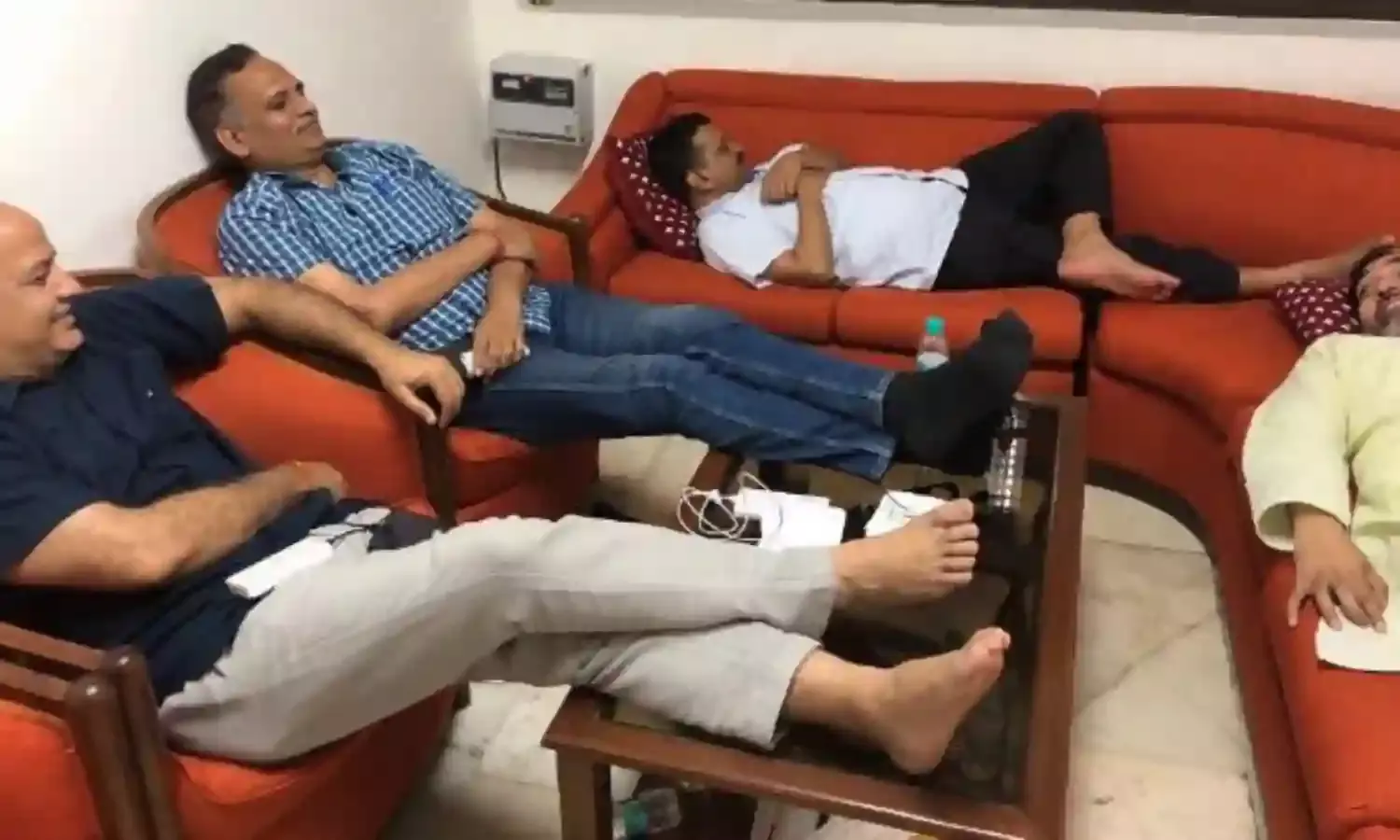Politics of Opportunism: BJP-Congress Flip Flop vs AAP Firmness on Delhi Statehood
Politics of Opportunism: BJP-Congress Flip Flop vs AAP Firmness on Delhi Statehood

NEW DELHI: Chief Minister Arvind Kejriwal and his Aam Aadmi Party government of Delhi are routinely derided by the BJP and Congress for street fighting, bizarre antics and not paying attention to governance. Kejriwal’s ongoing sit-in at the Lt. Governor’s office has drawn predictably, the same reactions from the two parties that dominated Delhi politics for decades before getting thrown out by the AAP in 2013, and more decisively in 2015.
But, on the key question of whether Delhi should have full statehood or not, both the BJP and Congress have been indulging in very nimble acrobatics for as long as one can remember. For both, the thumb rule is this: when in power don’t raise the issue but when in opposition go for it hammer and tongs. Since most of Delhi’s electoral history has seen these two parties in and out of power, the spectacle of their acrobatics has become dusty with age.
Delhi is currently a Union Territory with a Legislative Assembly. Some key responsibilities of full-fledged states are not devolved to Delhi’s elected govt. under Constitutional provisions. These include land, law and order and control over local bodies. It is incredible that the national capital, with a population estimated at 1.8 crore, suffers from this arrangement leading to the well-known quagmire of multiplicity of authorities – and political vendetta.
The first elected government for Delhi was formed by the Congress back in 1952 and led by Brahm Prakash. He resigned in 1955 because he wanted more autonomy in functioning which was not allowed by the then Chief Commissioner Anand Dattaya Pandit, and later with then Union Home Minister Govind Ballabh Pant. This was the first open expression of the limited-power-statehood problem.
Subsequently, the administrative system was overhauled and the Legislative Assembly abolished in 1956 by the State Reorganisation Commission. This was opposed by local Congress leaders but supported by then local Jan Sangh (now BJP) leaders.
In 1966, a 56-member Metropolitan Council was formed as a sop to the continued demand for more powers by local politicians of both parties. The first elected Council took office in 1967 with a majority from Jan Sangh. L.K.Advani was elected chairman of the Council. Jan Sangh was voted out in 1972 but came back in 1977 after the Emergency in the garb of the Janata Party. The third Council (1977-80) dominated by Jan Sangh passed resolutions demanding statehood for Delhi. In 1980, Congress won the Council and not to be outdone by the rival’s activism, it too passed resolutions demanding statehood.
After its resounding defeat in the 1984 general elections, the BJP in Delhi (they couldn’t win a single seat of the seven) decided to up the ante on statehood. Under the leadership of M.L. Khurana, V.K.Malhotra and Sahib Singh Verma, the BJP continuously agitated for full statehood. This pressure forced the Rajiv Gandhi government to set up the Balakrishnan Committee in 1987 for Delhi’s reorganisation. Following this Delhi was granted an Assembly but again the key powers were withheld.
The BJP, under Khurana led a vociferous and successful campaign for the first elections which included the promise of pressing for full statehood. The BJP won the election in 1993 and Khurana formed the government.
It faced a situation not dissimilar to the AAP now with constant bickering with the Congress led central government. However, it lost the 1998 election to Congress. This led to renewed demands for full statehood by BJP while the Congress mostly remained mum.
When the 2003 state Assembly elections approached, the NDA government was in control of the Centre. L.K.Advani, who had risen to become Deputy Prime Minister, tabled a Bill for “statehood with maximum autonomy” in Parliament on the eve of the Delhi elections, hoping to swing the Delhi voters. However, they again lost to Congress.
All through the UPA rule of a decade at the Centre, BJP maintained its demand for full statehood and included it in its 2013 Assembly election manifesto. The Congress, expectedly, kept quiet about it, as it was ruling both in the state and at the Centre.
Then, in 2014, Narendra Modi led BJP to victory in the Lok Sabha. Meanwhile the first AAP government which won the Assembly election in 2013 fell and fresh elections were announced for January 2015. In this turmoil, the two big parties of Delhi – BJP and Congress – in a somersault changed their positions on Delhi’s statehood. For the first time in decades, the 2015 vision document of BJP’s Delhi unit did not mention the full statehood demand. On the other hand, Congress suddenly after decades, started talking for statehood.
Then, AAP swept to victory in 2015, winning 67 of 70 seats. They had, of course, ardently espoused the full statehood demand. In their three years, they have stuck to the demand and in fact shown how essential it is for a more democratic and people-oriented government.
Meanwhile the BJP, once the torch bearer of full statehood has stopped talking about it. In fact, the Modi government seems to have buried the demand. Such are the opportunist acrobatics of BJP and Congress in the circus that is Delhi.
THE CITIZEN BUREAU adds: And both the main national parties have united to castigate Kerjiwal and his government, losing no opportunity to flay him at every opportunity, Despite the hounding by the BJP which is determined to make the Delhi government ineffective with the bureaucrats directed towards a no-cooperation policy, the Congress too has refused to come out in support of AAP with the fledgling government struggling now to function against the twin onslaught. The courts have currently questioned the sit in of Kejriwal and his Ministers in government at the Lt Governors house, asking how could a protest inside someones office or home be seen as justified. A ruling is expected this week.
(NewsClick)


